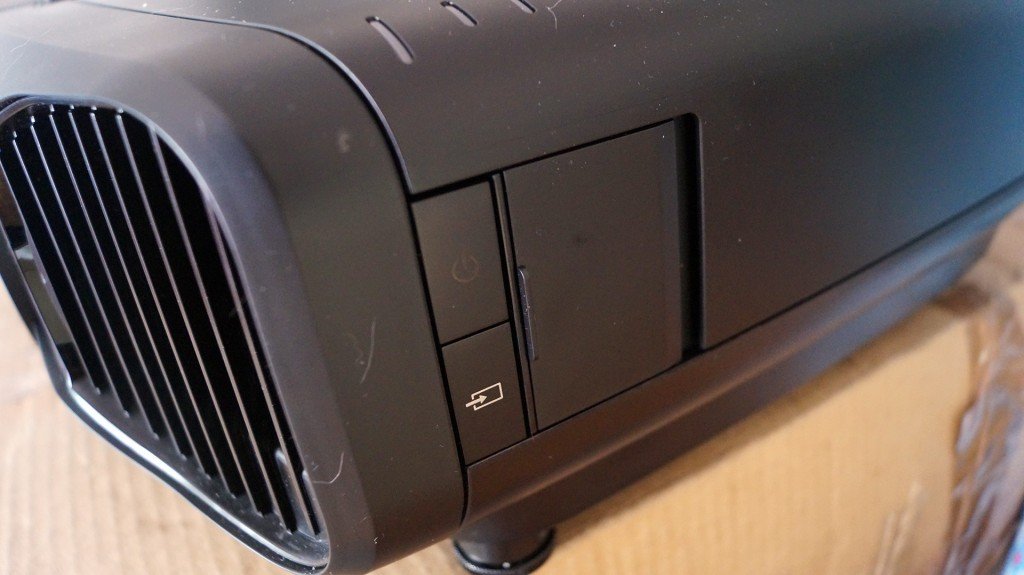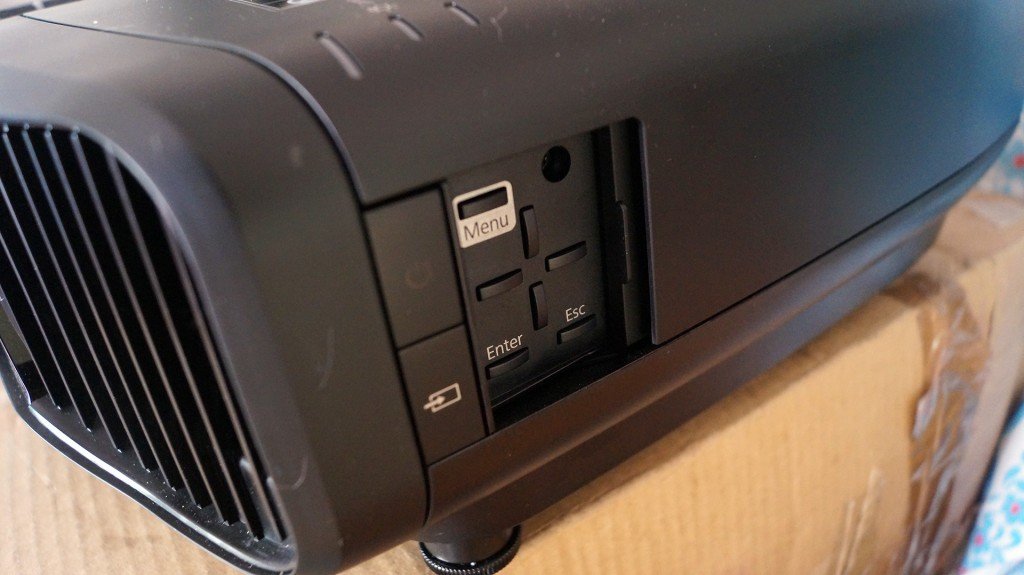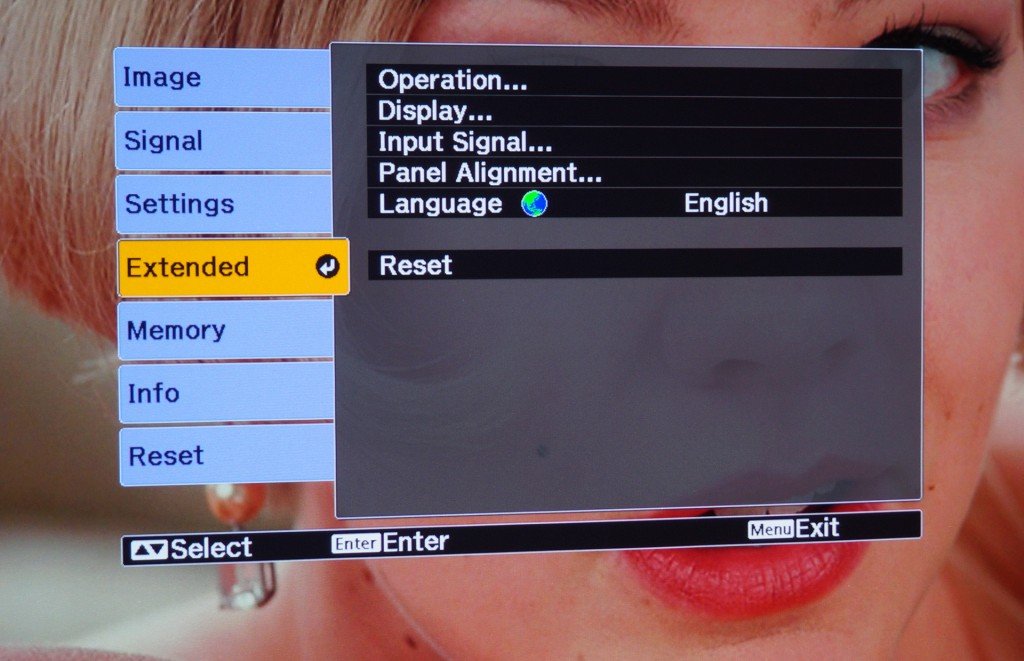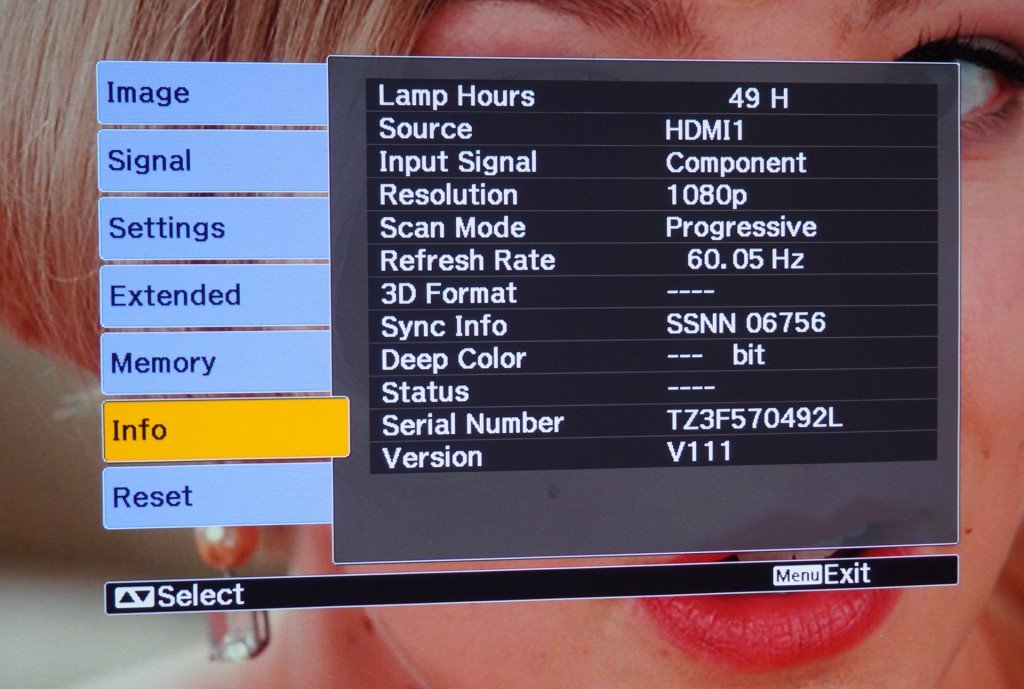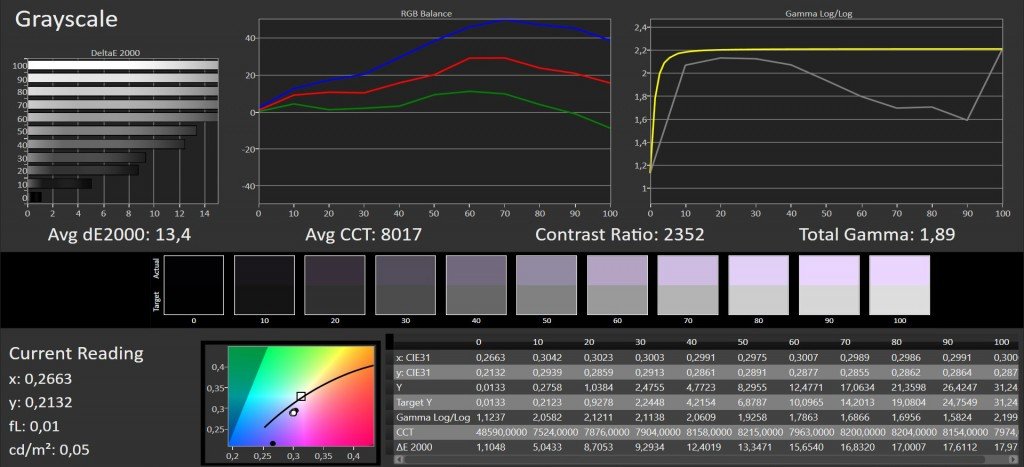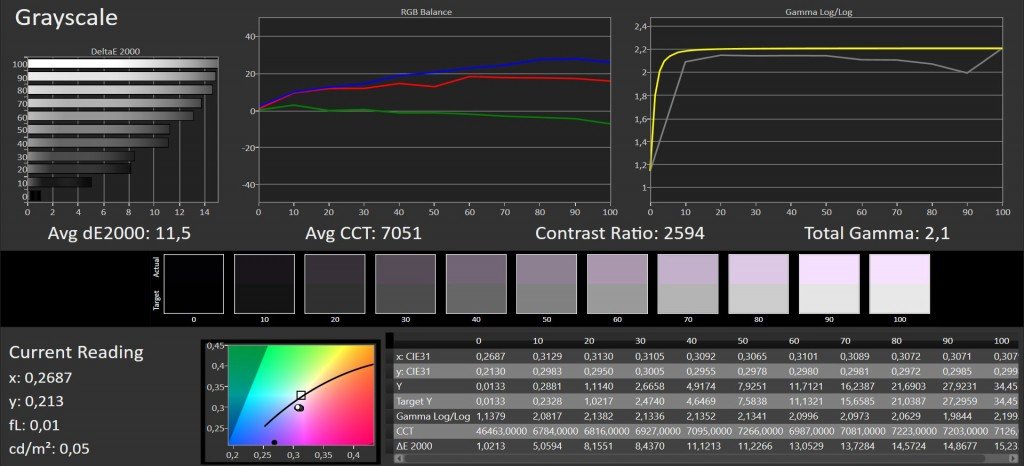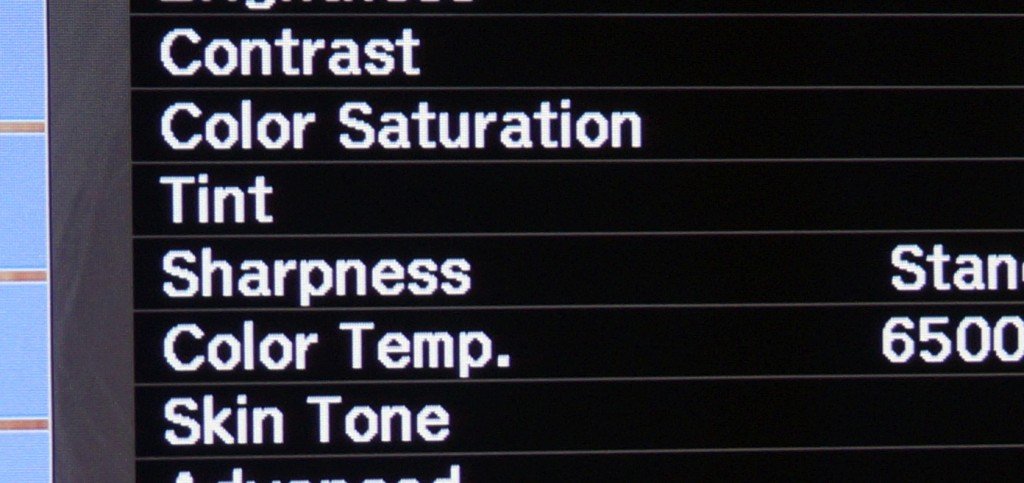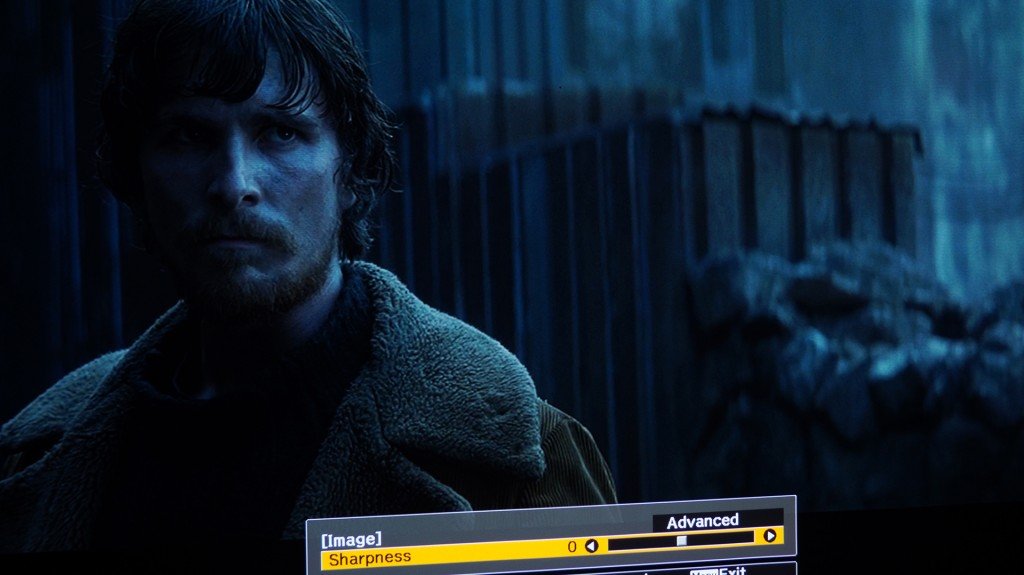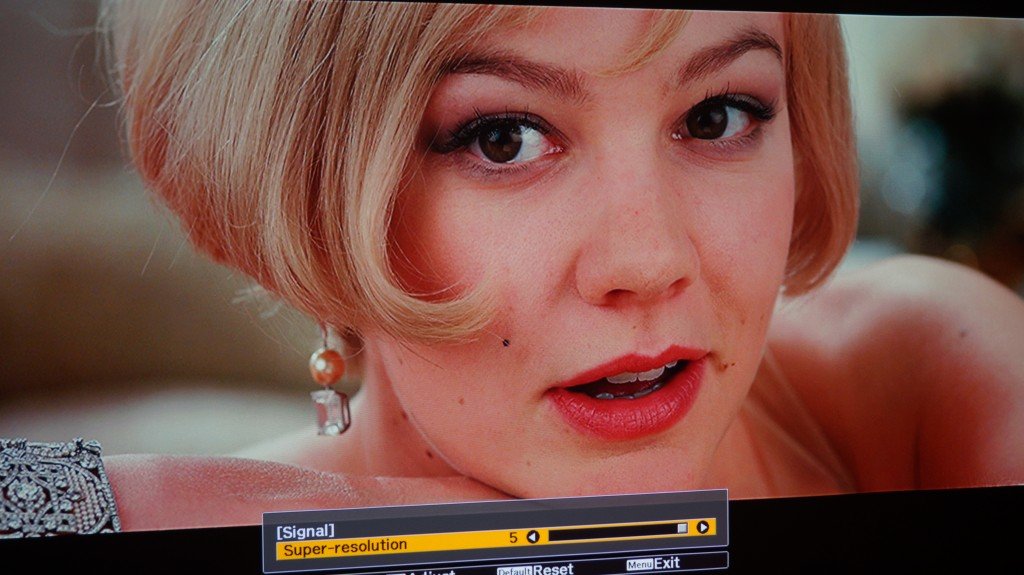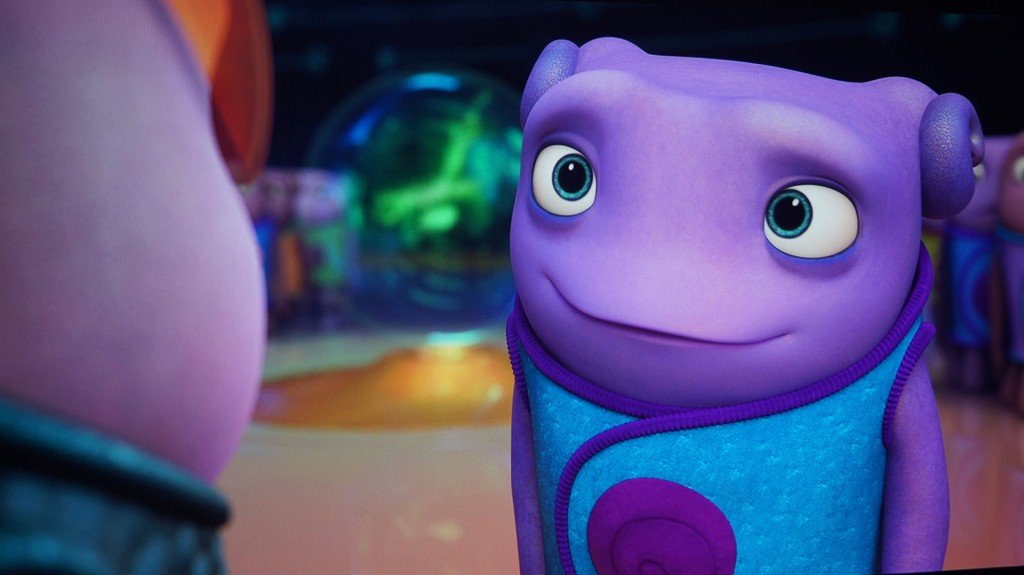Epson H is the company that manufactured the first LCD digital projector (VPJ-700) back into the distant 1989, i.e. rightly regarded as inventor of this technology and the first digital display instrument manufacturer, hardly eykatafronitoi titles will be spotted.
Since then spent 26 years and the truth is that we had huge leaps in technology specific progression, contrast soared from 100:1 in 600,000:1 (dynamic), the brightness from 100 and 2,400 lumen lumen in the analysis of 320Ch220 in 1920Ch1080.
Präsentation
The TW9200 is the natural evolution of TW9000 presented in the global market in 2012 and that rattled the water 2,000 Euro category as no other headlamp until then. Is apart from best seller in its category and reference projector would say, whoever wants to sits projector in this price category should inevitably be compared with him.
The LCD technology that carries has fans around the world due to the soft texture of film projected image but as fanatics and enemies because of the key disadvantages of for example of poor white uniformity and the large gap between the pixel.
Let’s see pass to see the key features of TW9200
- Technology: 3LCD
- LCD panel : 0,74′ MLA D9
- Resolution: Full HD 1920X1080
- Brightness: 2400 lumen
- Contrast: 600:1 (dynamic)
- Zoom: 2.1:1
- Lens shift: vertical 96%, 47% horizontal
- Lamp: ETORL 240W
- Lamp lifetime: 4,000 hours, 5,000 hours ECO mode
- Power consumption: 334W, ECO mode 270W
- Dimensions: 466mm X 395mm X 158mm
- Weight: 8.4 Kg
With zoom and lens shift 2.1 96% and 47% the TW9200 WINS easily and without second thought the gold medal as regards ease of placement in the category and not only. The projector can be positioned everywhere really means in our space saving us from big trouble, costs up to from spousal slipper I would say.
The TW9200 is a very beautiful and large projector. Symmetry in design and the lens with the electric door in Center to impress first contact.
Has a small sliding door in the right place that hides some basic sliders if you need to work without the remote control.
We have access to the filter easily removing one of the two front lids. The filter is removable and can be cleaned with compressed air when the time comes.
And from communication ports the 9200 is complete except for having two HDMI ports, VGA port for connection to PC and trigger for automatic opening of the screen with the activation of
The sliders of the lens focus, zoom and lens shift it manually with mechanisms “washers”.
At first glance you see that it is on quality construction with blurred spots but that discovering the more detailed do your observation. The plastic is not the definition of qualitative implementation of others nor you can prosapseis them something negative, like poor Assembly for example.
But it is certainly a negative function of the zoom ring and focus that playing with them seem to find somewhere and spin with difficulty and dragging noise. This is something that I have found in all of the Epson series TW9100/9200 that have fallen into my hands until today, so I tend to think that this is a design fault and no “theme” of this piece. Do not imagine that these rings have malfunctioned and that you can’t zoom and focus settings, just mention it in the general framework of understanding of quality construction.
Let’s move on to see the menu of the TW9200 which I have to admit that without to innovate compared to the classic style of the old Epson TW600 appeared, is more than complete giving the user the ability for each possible parameterization of the image.
Menü
Pressing menu on the remote control are in the window below where we can hurt the basic image sliders
We can choose one of the 4 color modes ready … (here to say that there are two other modes, the THX and THX 3D which do not appear when you have source HTPC connected).
To adjust the power of the lamp …
And to select the function Auto-Iris …
By selecting the advance menu leads in the following window you will find the main controls for the more sophisticated users …
Inside the gamma slider we find this familiar image. Here we can ayxomeiwsoyme the gamma aggregated across the scale or in individual sections (9 points) depending on what you choose. Indeed the 9200 gives you the option to do the setting and the picture you see something very useful when you do not have a gauge.
RGB slider there are full individual sliders Gain and Offset for each of our three basic colors.
Clicking on the slider RGBCMY revealed in front of us a complete CMS with the sliders hue, saturation and brightness separately for each primary or secondary color.
Super white To be a slider which actually lowers the contrast if we face our image in whites burned down
Here we can choose between three different color gamut depending on the source. I got the best measurements in the EBU position playing from my HTPC
In the second tab there are basic settings like F. I and the super resolution (something like sharpening)
The third tab we have some settings like picture to picture, the 9200 gives us the opportunity to watch two sources simultaneously.
The fourth tab is there very useful panel alignment that allows you to proofread any convergence problems. He wants a little familiarity other works, on the track that I had in my hands was not necessary “tease” because convergence was almost perfect.
In the operation there are some basic settings such as high altitude mode that allows us to increase the rotation of the fan cooling system if you live in an area that is at high altitude and the air density is less.
Main menu and the memory card, there we have 10 posts to swnoyme our settings.
The info tab contains just system information such as opening hours, which signal we have locked and the serial number of our projector.
End tab can do reset reset the lamp hours when you replace it, the memories that we save our settings or even to realize total reset in our projector.
Messungen
O headlight came into my hands with 39 hours, i.e. almost “paved” so I could & the measure through without losing time paving the lamp.
I was quite curious to say the truth because my experience from previous measurements of LCD projectors will not describe as fully and “positive”.
Go see the measurements you took in default mode the projector (as i.e. 9200 plays out of the box).
Cinema mode (lamp low/high)
Natural mode (lamp low/high)
Living room (lamp low/high)
Dymanic mode (lamp low/high)
The first conclusion is that the 9200 has no mode out of the box can play even decent by matter gamma and RGB (with the natural mode to is essentially one-way). The low of gamma with the very poor of curve seem straight from the first minute. You’ll tell me is something new? No. Those who 9000.9100 and 9200 I measure have identical behavior with gamma that tends to become very bright as we climb to brighter gradations.
This behavior shows for me that Epson did not attempt one iota to rectify these basic features out of the box the picture over time from the first presentation of TW9000 until today, a pity because the projector has all the possibilities to play close to the reference as you see when kalimprareis and really is wasted if played out of the box.
Like labelling two things. The natural mode is clearly better than the cinema mode and it should be used as a “base” for the calibration and secondly, the dynamic mode is not bad at all for such a huge brightness returns and comfortable can be used for viewing sporting event in a non-controlled brightness.
I used the natural mode in order to kalimprarw the 9200 and make this review here. Set and the result …
Natural mode (lamp low/high)
O 9200 lost during the calibration 22% brightness with the lamp low post and 23% in other high position at least came extremely.
But taking the 9200 in such a good setting is not at all easy, however, because the projector is recalcitrant as sum-horse before put into the starting box to start the race. Reacts to any combination of settings flying rider from the saddle while the poor believes that has managed to calm him down. Requires great patience, calmness and experience to bring the figure to balance ideals and to get the best possible performance of the 9200 in the cloth, with the patience to prevail as a percentage.
Let’s see what makes color the 9200. The measurements that I see relate to the three different color gamut that features in the menu.
SMTPE
EBU
HDTV
I chose the EBU gamut color to kalimprarw color the 9200. Without dealing too (I was already slightly burned out by adjusting the gamma and RGB) the result would describe as highly satisfactory.
The black dot that we see in the diagram shows that the ultimate black of mpledizei somehow, something actually happens but not on so heavily. However we should tell everyone with a thumbs up to the measuring instrument that caught the right tint at the very dark black of 9200 even if slightly exaggerated in size of deviation …
Let’s see and measurements of brightness and on/off contrast
- natural calibrated lamp low 512 lumen
- natural calibrated lamp normal 662 lumen
- cinema default lamp low 595 lumen
- cinema default lamp high 745 lumen
- living room default lamp low 1200 lumen
- living room default lamp high 1560 lumen
- dynamic default lamp low 1730 lumen
- dynamic default lamp high 2320 lumen
The 9200 kalimprarismenos with lamp at low lumen brightness 512 pulls out, Yes, enough to fill a frame 100-110 instes other in no way capable of “yperfwtisei” our screen or ready to take almost all projectors up to 2000 euros that I counted. On the other hand the real lumen 2320 in dynamic mode is real feat and fully justifies Epson when talks about 2400 lumen brightness projector’s characteristics.
contrast on/off native
- natural calibrated 5.363 :1
- cinema default 5.625:1
- dynamic default 5.363:1
The 5.363:1 native contrast on/off which attaches the 9200 is a very strong number. It may sound sickly stumbled upon something 40 and 50,000:1 you attach even import JVC, other combined with the dynamic IRIS which works very well may and returns extremely dark scenes. (However I think if the blue polarizer panels had better factory setting and the black mpledize not slightly the 9200 maybe transcends and 6,000:1 contrast on/off)
A general conclusion from measurements performed on the 9200 is that the projector has tremendous potential, others are very well hidden. It must be very good setting to see balanced image in line with its true capabilities. Once this setting is performed, the 9200 compensates the viewer with the above as you see then …
Entypwseis
Lens
As in every review so to this I started with absolutely essential element to a projector in my personal view, the lens. Starting in 9200 to focus it’s first negative impression that I mentioned above. The washers of the focus and the zoom does not spin freely like it should despite difficulty factor simultaneously and various mikroichoys plastic grit. I shall not speak about such sloppiness that construction is not allowed on searchlight of 2,000 euros more will say only that this manufacturing defect affecting the functionality of the lens.
My “conspiracy theory” and at the same time possible explanation, is that having feedback like the Espon the complaints of some owners of the first TW9000 who say that the projector loses the benefit of focus after some time of use, decided to give rough solution (a design and the projector is he) cornering somehow the focus ring so that it can not be shaken by the expansion in the operation of the projector. Far-fetched, I know, others forgive me, I can’t imagine that in the quality control of the product the person responsible for controlled operation of the lens and said “pass”.
I will not dwell on this any longer but impairment because once you manage and find the correct position in the ring then the 9200 does indeed very good focus. Basically a surprisingly good family focus from edge to edge of the screen to the point that it makes you wonder how it is possible such lens operation focus gives such a good final result. You tell me but the result is not what counts at the end … and you are absolutely right …
Konvergenz/weiße Gleichmäßigkeit
The second test was that of convergence. All tritsipoi LCD have difficulties in this area because it is extremely difficult to “fall off” the three pixel panels right on top of each other and usually see differences from piece to piece. Here the 9200 has demonstrated very good behavior (at least the part I had in my hands) with very good convergence from edge to edge of the image. This I admit that was a pleasant surprise for me. For the record the 9200 has the convergence setting through the menu and it works fine in the case that the user must intervene.
White uniformity the 9200 our spoils it a bit. The classic greenish tint on the one hand and on the other kokkinizoysa were not lacking in this LCD. The good was that the phenomenon was irritating my eyes only into white tab, and almost never in movie viewing. Unfortunately the phenomenon usually tends to display zoomed with the passing of hours and years and is something that the owner of a LCD projector must learn to live with it.
Schärfe
The 9200 is not only stands in pretty good focus’s, Espon has equipped him with two sliders “miracle” that can help its image to be as articulate want. These are the sharpness sliders and super resolution. The function of these regulatory does not hide the fact that I quite liked because intervening absolutely linear, helping the user to find the ideal location for his tastes. Personally, and after several experiments, I found my own “Nirvana” having the sharpness in-3 and super resolution at + 1.
If you want to get an idea on how they affect the image of these two sliders you can notice the pics below
Schärfe
Super resolution
As a general conclusion I will say that I was absolutely delighted by the clarity of 9200 which evokes more DLP projector than LCD, which if I say that I expected … I’d say lying, be sure …
Antrag
The 9200 locks in 24hz and behaves pretty well I would say. The motion is improved compared to the predecessors of the other does not claim and laurels, I would describe just as good. In the arsenal of features and interpolation frame option with three posts, low, normal and high. Unfortunately in all three places the behavior of additional frames are not expected. Even in the low position the 9200 finds it difficult enough to normalize the traffic without artifacts.
In difficult scenes shows as if it reaches the processor at the maximum limits resulting in momentary pauses and creation of artifacts. If you upload the setting to normal or high artifacts unfortunately proliferate and make viewing almost problematic.
If I had to compare with F. I of BenQ, Optoma and JVC’s that I’ve recently in my mind I would say that this is by far the worst Epson’s implementation and of the three.
(Somewhere here to say that the 9200 also features a slider that names image processing with fine options and fast. The first relates to viewing films and gives the maximum image quality and the second made some sacrifices at the altar of speed. Choosing fast will chreiastoyne who use the 9200 for games that the projector’s input lag plays an important role).
Betriebsgeräusch
The 9200 has a well-designed cooling system and the necessary space to the harnesses. With the bulb in the low post o projector is completely silent and cools satisfactorily I would say. It has an entrance with air filter cleaned and an exit by obliging the air passing from almost every point of the Interior and to eliminate the heat towards the exit.
If we want de and good to the criticism that a defect that would be failure prediction during the cooling air flow design, to the point of optical based the cinema filter with an effect in some cases to astochei.
Bild
The moment I finished the calibration began slowly to put scenes from pretty much well known movies in order to get my first conclusions. Since it took me a little time to adjust the scenes on super resolution and sharpness (well the other paternakia like the real picture of known scene..) I started observing.
As a first conclusion surprised me the excellent sharpness and clarity of an image that I had towards me.
The 9200 views a picture razor other alongside a cinematic “laxity” in confusing. From a large gap of pixel (typical downside of technology) and on the other the very good clarity and sharpness of the image in “perplex”.
Are headlamps which required over 30 minutes of continuous observation to take even my first conclusion while I usually don’t need more than a few minutes of viewing if it tells you something.
The details of the image portrayed by excess momentum and clarity that is not consistent with what we expect to see knowing the features of technology. I daresay that the 9200 represents the LCD technology at its finest …
(The only disadvantage that we can reproach is the large gap between the pixel compared to other technologies. No, in no way creates neither suspected phenomenon screen door effect as the older LCD, just the image shows not so compact as DLP for instance).
The 9200 has its own way to perform skin tones and hues that the measuring instrument cannot “catch”. There is no known artificial “yellowness” of LCD technology (okay, almost …) others has remained somehow this “soft” and rested in the picture that give a texture that looks like old film footage. Especially in skin tones (the 9200 also features extra slider) impressed me greatly to say the truth …
The lumen of 512 kalimprarismenoy 9200 may sound little like # others is enough to give excellent medium and light scenes. At no point did you miss the light and indeed because of very good contrast might receive and the illusion of much greater brightness in different scenes containing and dark spots from the real. If not, add into the equation the very good clarity and excellent skin tones, then the result is beyond expectation, trust me …
The great rejuvenation of 9200 but is dark and ypofwtismenes scenes. There really gives headlight change and offers the viewer a good cinematic experience. Intended the gift we would say down low black level thus returns completely uncompressed every possible detail with no veil. If not, activate and IRIS, then raises performance at very high levels for projector in this class.
Parentheses, the iris of 9200 works excellent and recommended to be enabled in high speed mode, since it helps enough in dark shots without being annoyingly perceived. Here the Epson has done a really excellent job in software (for the hardware can’t say anything since IRIS as an accessory is the same and identical to that of the first TW600) and we need to say a thumbs up.
Dramatic improvement is the LCD technology and ansi contrast. In classic scenes that I’ve seen several times in the 9200 projectors DLP clearly showed that has closed the gap significantly.
Apart from the excellent skin tones (I stress again because the 9200 makes the difference here) color the 9200 has its own way to produce various shades. Basically after and some fumbling I wouldn’t say that I was sold. I can’t describe in words what I eisepratta as a spectator more always something I wanted to change, to alter, to fix it.
In no time I was watching this clear and “fixed” color palette of a good DLP projector for example and there were scenes with color-matched and others that the 9200 behaved strangely. I’ll describe as chromatic LCDadiki whim (or my own whim, who knows) that some might like it, I’m not one of them.
I don’t know if going through this feeling to the camera lens (probably not) other will make an effort …
Schlussfolgerung
If a conversation I had to describe my respect for the TW9200 would say “better than I expected”. Will dwell in that spotlight with pleasantly surprised every time I expected to disappoint in areas that I would not say that it is and the Forte. Enough brightness, good black and brilliant clarity is three of the features that impressed me and I would say that they are the main weapons.
The 9200 essentially plays in a class of its own, that of 2,000 euros. A thousand euros over the small category of affordable and exceptional small DLP and a thousand euro below the next highest contender clearly Sony VPL-HW65ES. That way we could say “surreptitiously” avoids direct comparisons with them although I don’t know ultimately if it suits him in practice or not something. For me the ideal price of 9200 should be located somewhere in 1500 euros, something that will automatically make it a beauty and I reflected with greater veracity the relation price/quality/performance.
Positiv
- sufficient brightness for each screen size and a mode (dynamic) for showing even day
- very good black levels and great functionality of dynamic IRIS
- Very good clarity
- Full regulatory and with the above I would say
- Very good skin tones
- good convergence and other premium slider to adjust if needed
- Quiet operation
- Lamp warranty to three years
Negativ
- Mediocre build quality
- Poor white uniformity (characteristic of technology)
- Big gap between pixel resulting not so compact image (feature technology)
- Bad factory setting image almost in all modes that makes the necessary calibration
- Moderate to poor implementation of frame interpolation
The only perhaps 9200 ‘s opponent in this price category is the BenQ W7500 and the very interesting comparison of them will read very soon here at projectorjunkies. LCD vs DLP well in battle till you drop and whoever stood …
Gute Aussichten!
Nikos Tswlas




